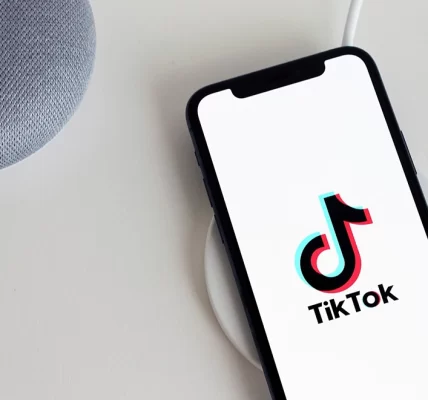

Countless indie musicians don’t know how to find their music niche, hence they miss out on proper promotion tactics. Decades ago and as a musician, you could probably identify with any main category of music and it would work. But times have changed. With the internet came so many new branches of every main genre (and a flooding of independently published music) that it’s gotten more difficult to name your baby. That’s the biggest reason it’s getting harder to build audiences as an artist. If you’re pushing your music to the wrong crowd, you’re getting nowhere. I know I upload a lot of articles that focus on the monetary aspect of making music; however, the core reason people make music is to be heard. If it’s in the wrong place, how are you going to start building your community?
And that’s what it all is, initially. Artists across the world usually have the same goal; for people to listen and enjoy. Possibly even stick around and discover they have some kind of subcultural commonality. Most of us are social creatures to some degree. Otherwise, we’d not be trying so hard to get people over to our YouTube or Spotify pages.
Let’s start with the most obvious problem: Feeling stuck in a weird niche that no one could possibly listen to. First of all, being unusually niche is a good thing! The people who do listen to very obscure music are likely to be intensely devoted to finding new music and supporting yours. You’ve just got to find these people, and to do that, you have to go outside of your local social circles. And more commonly, outside of your country.
I’ll use my own music as an example. As an editor who promotes other people’s music, I don’t really focus much on marketing my own. I do love making that music, though. I play with it at night when things are settling down. When I began trying to place the music I make, it was ridiculously difficult. It’s a side gig; something I do on days off. Who on earth listens to Electro Dream Pop? Turns out a lot of people do. But only a few of them live in my home country. So I began putting more of my efforts into sharing it across the ocean.
I had to figure out what kind of music I made. We have our own ideas of what our music sounds like, but that’s not generally how others hear it. In order to find out where you really fit in, you have to share your music in a lot of tight corners of the internet. It’s also advisable to remember that all art is eternally subjective, and as an artist of the obscure kind, you’re going to run into a lot of dismissals. There are several ways to find that strange niche:
I like using an analytic tool called Cyanite.ai. It’s one of the best I’ve seen, and it gives me the general bpm, all the main (or umbrella) genres a song fits into, and shows me similar songs. You upload your music file or add a YouTube url of your song to the library, and you get a lot of incredibly helpful information. You can then discover these “similar artists” and look at where they’ve put their own music to start. I’ve been pretty impressed at the accuracy; the similar songs that come up match my music almost perfectly. I once thought I made music that was different, but then I used Cyanite and found out that wasn’t the case. Cyanite even has links to those similar artists on Spotify, so you can figure out which playlists to submit your music to.
There’s a pretty good musicians resource website I often visit called Music Nomad. It’s got a ton of information, so some of it’s outdated—but most of it’s not. If you look around the resources section under Music, you’ll come across a lot of online radio stations willing to play indie music. Yes, even the “weird stuff”. There’s a lot of other music curators and resources there to help you. Even my music got airplay on some European college radio station. Which brings me to the next tactic: Moving away from local social circles.
Once you’ve determined your niche genre, start researching similar artists you’ve discovered. Find out where their music is getting the most action, and who their audiences are. For me, it wasn’t the US. It was scattered across Germany, France, and Africa of all places (yeah, pretty surprising for me, too). And so now, I focus more of my energy on those areas. You must be willing to cross cultural and language boundaries. If you aren’t multilingual (I’m really not), you can use a translation service to communicate with curators from other areas. Systran is my own personal choice for that; it’s one of the oldest translators out there, and has evolved nicely. It was being used by NASA long before Google came along.
After you’ve managed to find your target Spotify playlists by looking at artists who make music like yours (and they do exist), and after you’ve compiled a list of curators across the globe your music actually fits with, it’s time to move on to those fans. This is the easy part.
You can get lists of them; just look at who is ‘liking’ and following the music of your music artist similarities. Start talking to them (without advertising your music in their DM.. that’s annoying). Just talk. Make acquaintances. Find out where these people go to watch live shows, where they find their favorite music; establish yourself into their communities. This has a doubly good takeaway; you’ll find out where to push your music, and you’ll build friendships with a new crowd. That’s always a good thing.
The truth is, music makers are simply looking for their ‘tribe’, and their fans are, too. Musicians have a unique job to do; they are here to connect people through one of the most emotional outlets in existence. Just remember that there aren’t that many gatekeepers for mainstream music; just a few giant ones. As an independent musician of a unique genre, you don’t have to rely on those particular people. There are thousands more across the world, excited to bring you into their gated communities and share you with like minded listeners. So step away from the mainstream and dare to take that train to another place.




